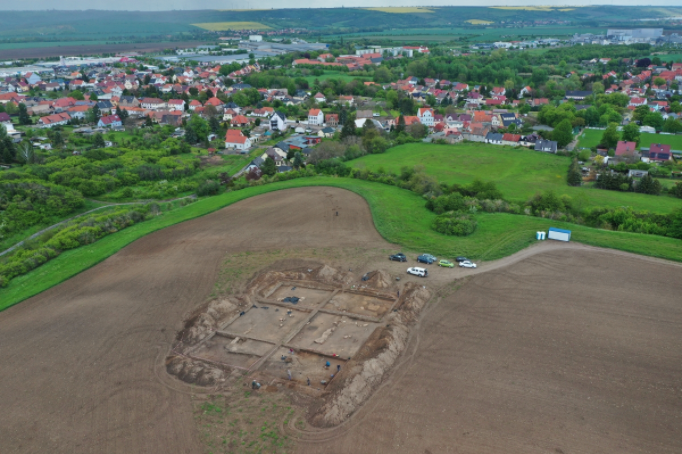ART WORLD NEWS
1,000-Year-Old Church Discovered in Germany – ARTnews.com
The foundations of a 1,000-year-old church built by German Emperor Otto I (also known as Otto the Great) were rediscovered by archaeologists under a cornfield in Helfta, Germany, in late June, according to the State Office for Monument Preservation and Archeology in the country’s Saxony-Anhalt region.
Based on the foundations, the church was 66 feet wide, and it existed alongside a massive cemetery containing at least 70 graves. Numerous artifacts, including coins, utensils, jewelry, and other accessories, were also found last month.
The church was built in the 10th century and was continuously occupied for 500 years, perhaps even once serving as a monastery. There is evidence that Otto the Great stayed there twice, highlighting the importance of the location and building. The archaeologists knew to look for the church because a historian from that period, Thietmar von Merseburg, wrote about its existence.
Related Articles
Historians have considered Otto the Great the first Holy Roman Emperor. Following his defeat of pagan Hungarian invaders in 955 C.E., he came to be known as a protector of Christendom. He used his self-proclaimed divine right as a ruler and his dealings with bishops to tighten his control over his kingdom and to begin his aggressive expansion into Italy. His son Otto II would succeed him after his death in 973 C.E.
Because Otto the Great was associated with what is now known as Catholicism, the church was torn down during the Protestant Reformation in the 16th century. Though other Christian structures from the period survived, it’s possible that the church was dealt with more severely, since Martin Luther, the founder of Protestantism, was born in nearby town of Eisleben.
The Minister-President of Saxony-Anhalt Reiner Haseloff said in a statement, “I am especially happy about the sensational excavation results in Helfta, because this is one of my favorite places in Saxony-Anhalt. With the identification of the location of the church an important regional historical gap is closed.”
Excavations will continue until September 2021.











